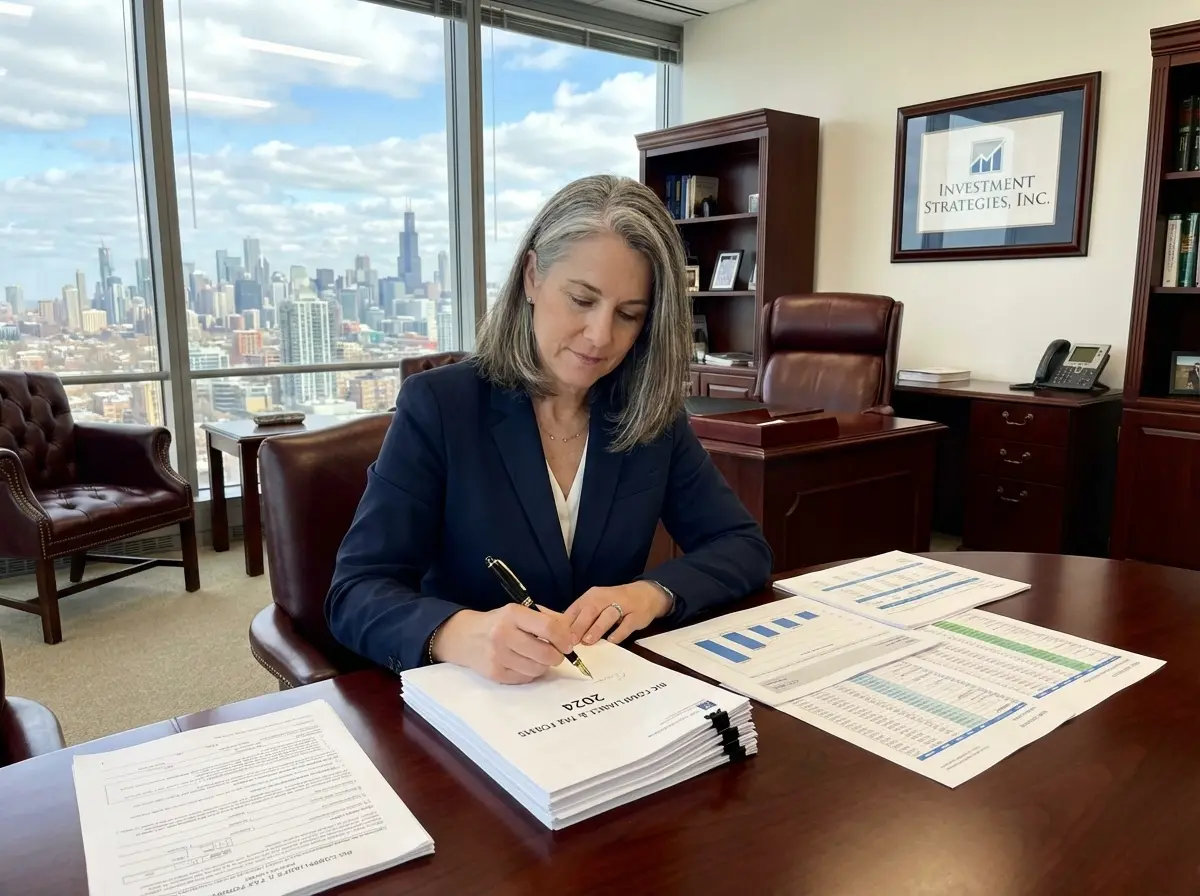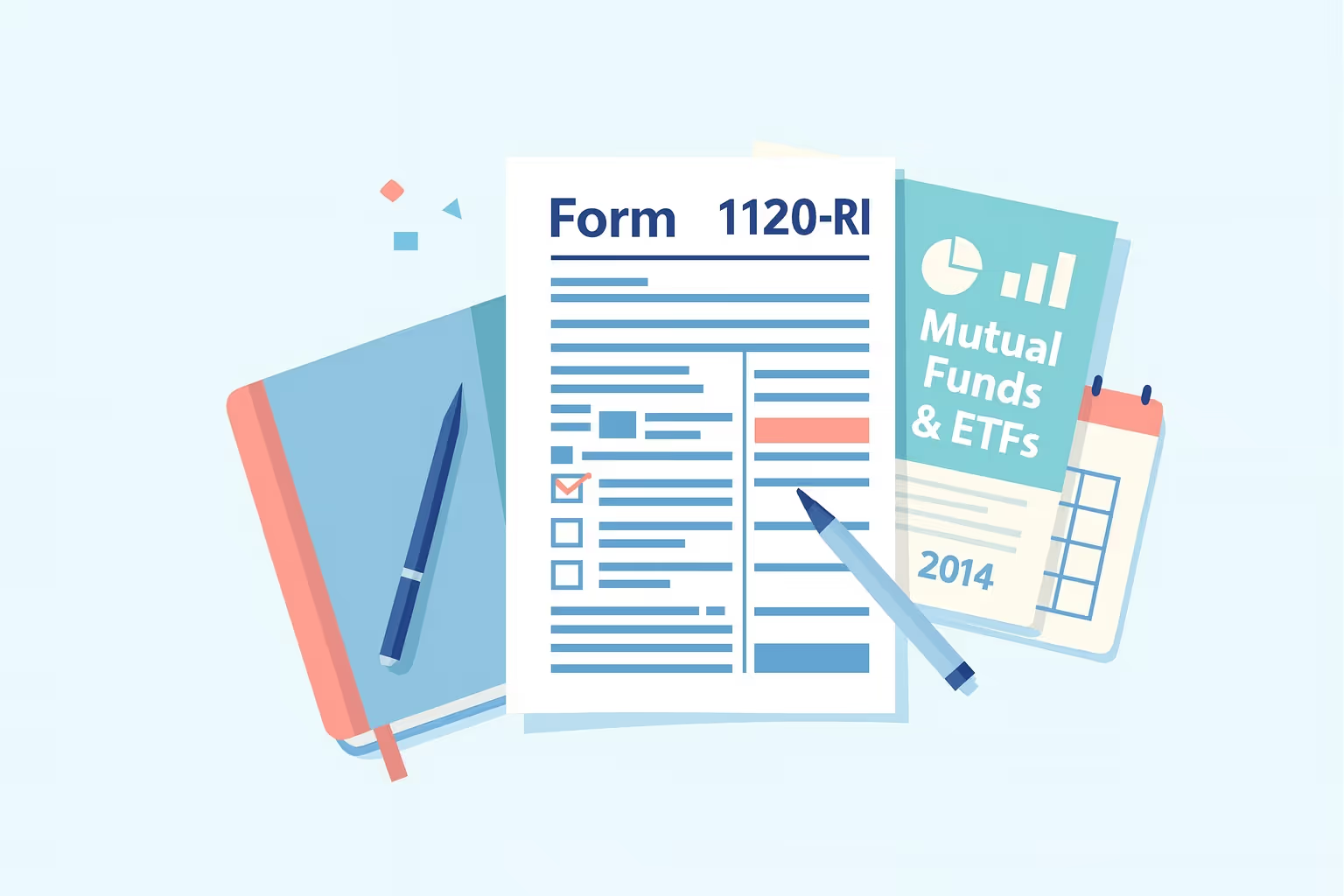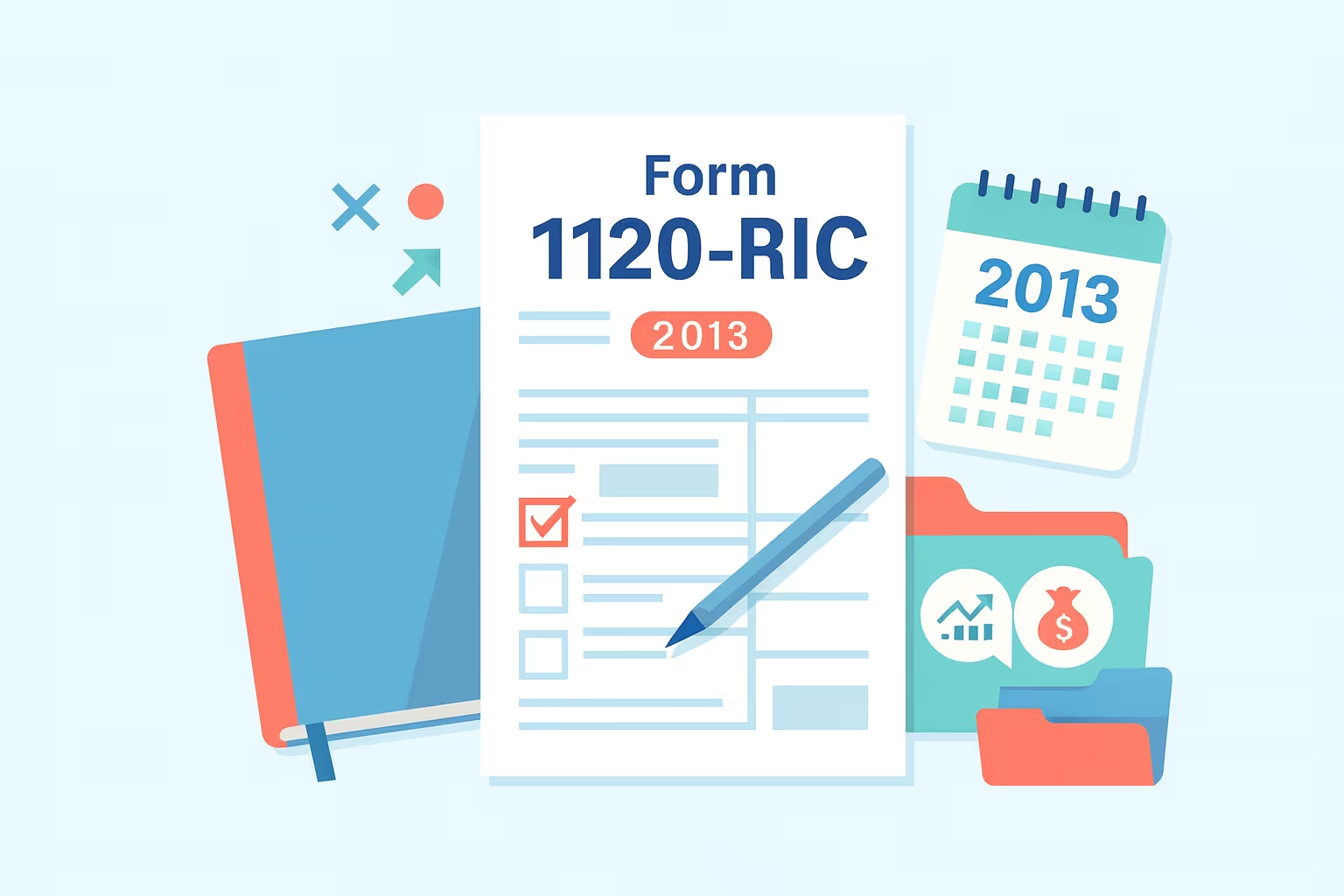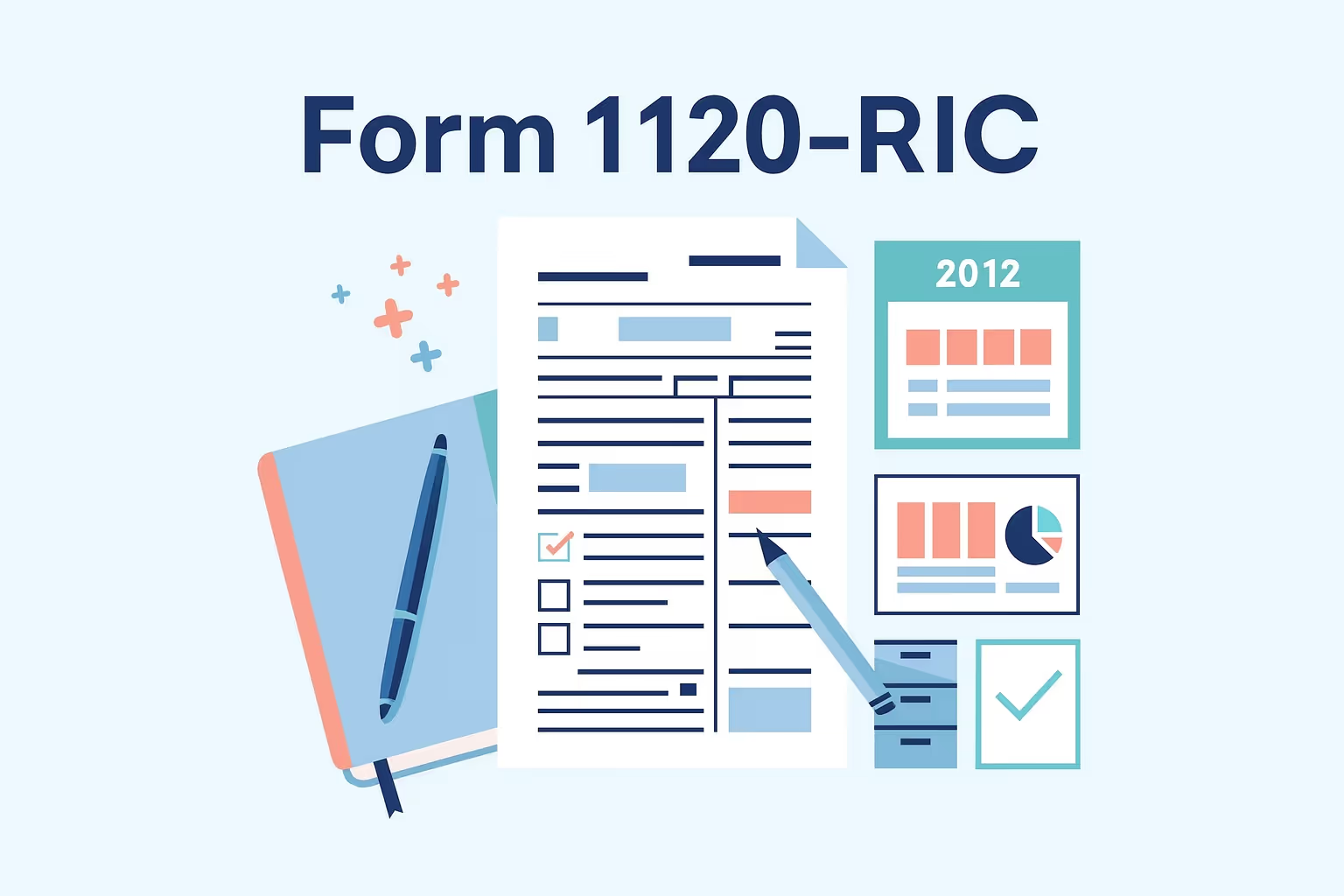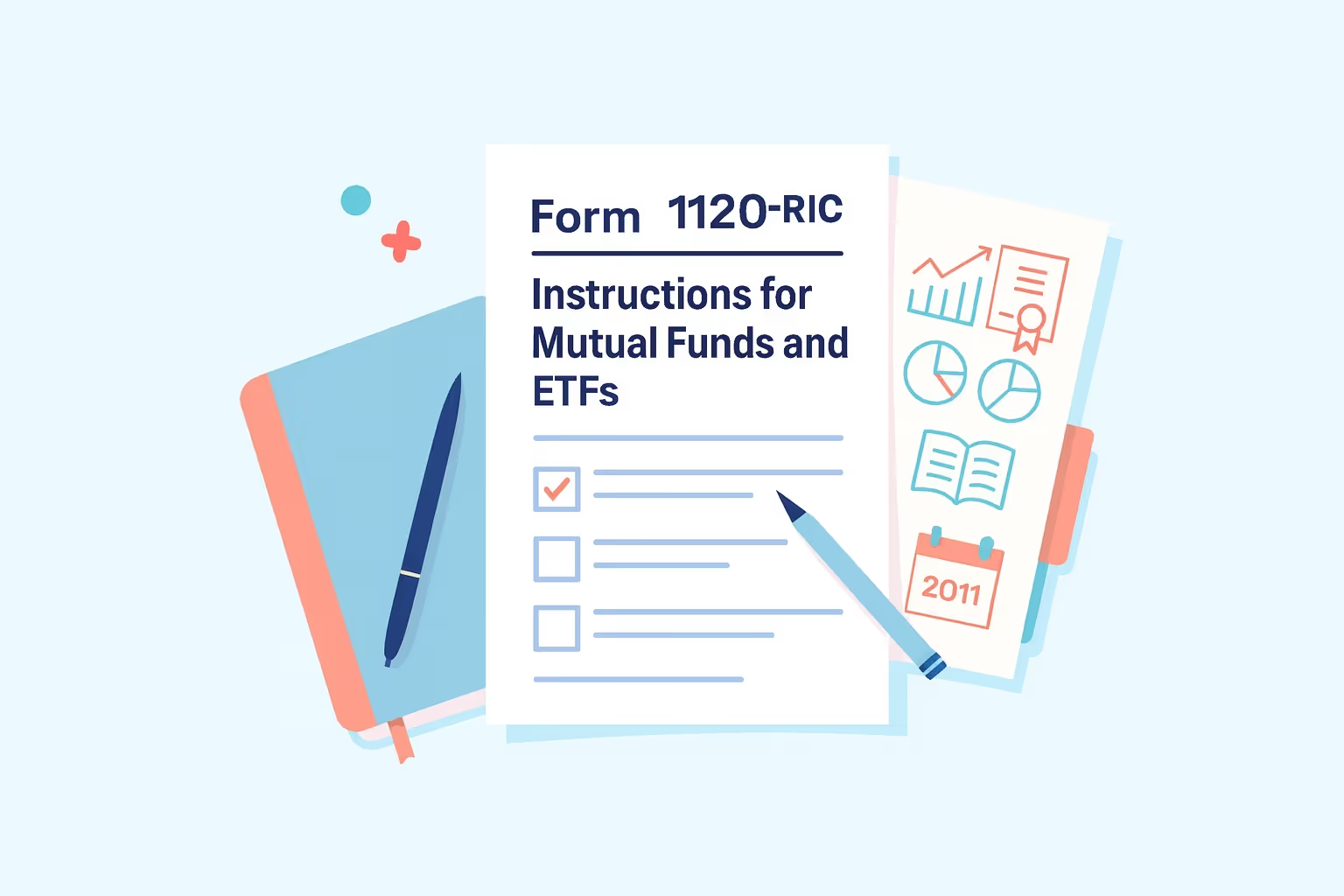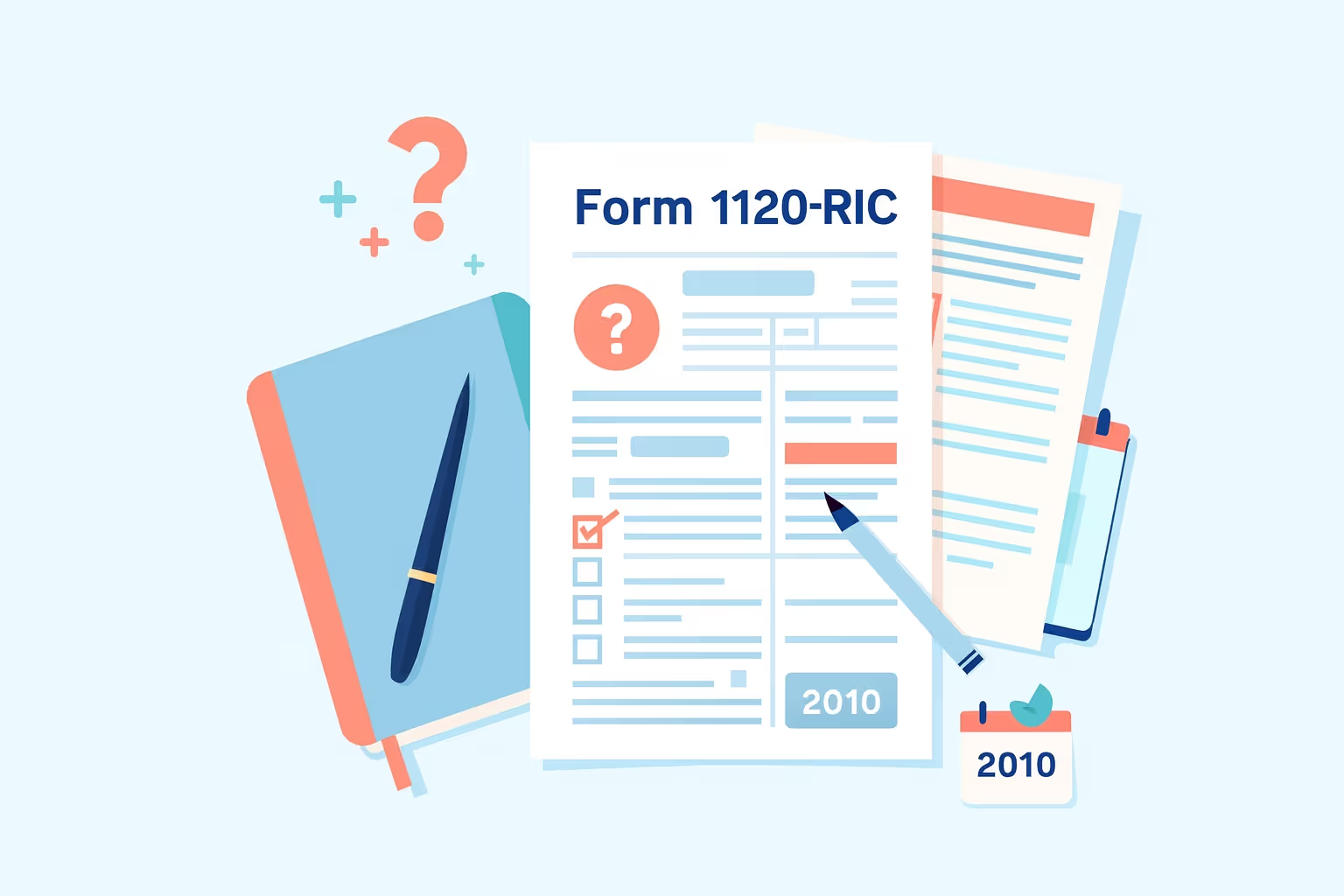
What IRS Form 1120-RIC (2015) Is For
IRS Form 1120-RIC (2015) is the federal income tax return used by regulated investment companies, including mutual funds and ETFs. These entities file the form to report gross income, deductions, credits, and the tax owed for the tax year. The return supports the pass-through tax structure that allows funds to distribute income to shareholders instead of paying corporate tax. To qualify as a RIC, the company must meet annual income, distribution, and asset diversification requirements.
When You’d Use Form 1120-RIC (2015)
You would use Form 1120-RIC (2015) when a regulated investment company must submit a late or corrected income tax return for that year. Common situations include:
- Late filings: The company missed the original due date and must now file to address unpaid taxes or an IRS notice. Review our resource explaining how the IRS handles unfiled corporate tax returns and what to expect when submitting an older 1120-RIC filing.
- Amended filings: The fund must correct errors involving gross income, deductions, bad debts, or shareholder reporting.
- Incorrect estimated tax payments: Prior estimated tax payments were incorrect, and the return must be updated to report the correct amounts.
- Expired refund window: The refund period for 2015 has passed, so filings now focus on clearing penalties and interest or resolving a remaining tax bill.
- Compliance issues: The fund must correct any incorrect information to meet the RIC qualification rules for the tax year.
Visit our page, which lists essential IRS forms and instructions you may need when completing a past-year return, such as Form 1120-RIC.
Key Rules or Details for 2015
Several rules applied to regulated investment companies during the 2015 tax year, and these standards affected how funds completed IRS Form 1120-RIC for the 2015 tax year.
- Five-year built-in gains recognition period: RICs converting from C corporation status had to apply a five-year window before recognizing certain gains.
- RIC Modernization Act provisions: Rules that remained in effect for 2015 allowed funds to correct certain income and asset test issues when specific conditions were met.
- Annual income distribution requirements: RICs were required to distribute at least 90% of their qualifying income each year to maintain their tax treatment.
- Asset diversification standards: Funds had to meet quarterly tests to show their holdings were properly diversified under RIC rules.
These requirements guided how RICs reported income, met compliance standards, and completed their 2015 tax return. Learn more in our guide, which covers how the IRS reviews overdue or amended business filings and why notices may appear after submitting a late Form 1120-RIC.
Step-by-Step (High Level)
Below is a simple process for filing your 2015 tax return using IRS Form 1120-RIC. These steps help taxpayers report income accurately, resolve outstanding balances, and avoid penalties associated with late payments or missing information.
Gather Documentation
Collect transcripts, prior filings, and any IRS notices related to a failure to file or a payment issue. Review all the facts to confirm the tax paid, and note whether a natural disaster, serious illness, unavoidable absence, or record of death affected your filing.
Complete Form 1120-RIC (2015)
Use the correct prior-year form and enter income, deductions, credits, and any foreign tax credit. Validate accuracy even when using tax software, since errors may lead the IRS to charge interest or apply additional penalties. You may request penalty relief or reasonable cause penalty relief when circumstances support it.
Attach Required Schedules
Include Schedule D, Schedule N, and any supporting forms to document gains, qualifying income, and distributions for the year.
File and Pay
Mail the return to the correct IRS service center and select a payment method, such as a bank account, money order, cash, or online payment using the IRS locked padlock icon. If you cannot pay in full, a payment plan may be a helpful option. Include your employer identification number to avoid delays.
Retain Records
Keep copies of the return, schedules, and payments in case the IRS updates a page or issues a notice that affects your filing. Visit our penalty abatement page to see when a fund may qualify for relief from late-filing or late-payment penalties associated with a 2015 return.
Common Mistakes and How to Avoid Them
Regulated investment companies often encounter preventable errors when completing IRS Form 1120-RIC for the 2015 tax year. Understanding these issues—and how to avoid them—helps reduce delays and added costs.
- Missing required distributions: Failing to distribute enough income can trigger an estimated tax penalty. Review distribution totals early and confirm they meet RIC rules before filing.
- Incorrect income or asset reporting: Errors may result in a failure-to-pay penalty if the IRS determines that the tax paid is too low. Recheck totals using reliable records and compare them to prior filings.
- Paying late: A late payment penalty may be applied if payment is received after the due date. Ensure payments are submitted before the deadline and verify their posting. See our page on IRS payment plans if the fund still owes a balance for the 2015 tax year and needs a manageable payment option.
- Unclear or incomplete records: Missing documents or records can result in significant consequences, including death, and may incur interest charges tied to the current interest rate. Maintain organized files and back up essential documents.
- Assuming penalties cannot be resolved: You may still need to pay fines, but relief may be possible when delays were due to circumstances beyond your control. Document circumstances and request review when appropriate.
- Using the wrong payment method: Incorrect payment options can slow processing.
Select an IRS-approved method and verify all details before submitting.
What Happens After You File
Once you submit IRS Form 1120-RIC 2015, the IRS reviews the return to confirm you followed all rules and reported income correctly. If the agency requires additional details, you may need to contact the IRS to clarify items related to property, wages, or other supporting documentation. The IRS may send notices if amounts are missing or fail to match their system. You can pay the full amount to comply with the tax year's requirements.
FAQs
What penalty relief is available for a late 2015 Form 1120-RIC?
Penalty relief may be applicable when a fund can demonstrate that circumstances beyond its control prevented timely filing. The IRS reviews documentation to determine whether the request meets its standards.
How does the IRS calculate penalties and interest on a 2015 income tax return?
The IRS bases penalties and interest on the balance owed, the number of months past due, and whether required payments were made on time.
When can a fund request reasonable cause for penalty relief?
Reasonable cause penalty relief may apply when events such as illness, missing records, or disruptions made it difficult to file or pay on time.
Can I set up a payment plan if the fund cannot pay in full?
Yes, a payment plan may be available to help resolve the balance over time when immediate payment is not possible.
What happens if there is a failure to file for the 2015 tax year?
Failure to file may result in additional penalties and notices until the return is submitted and the IRS updates the account.







